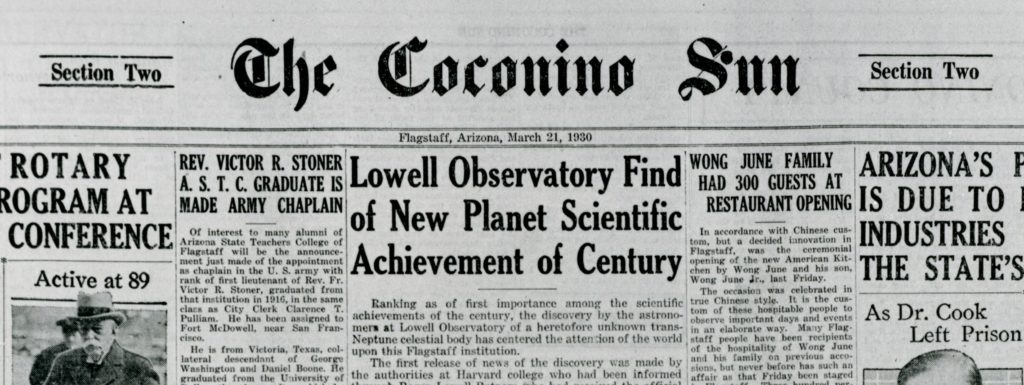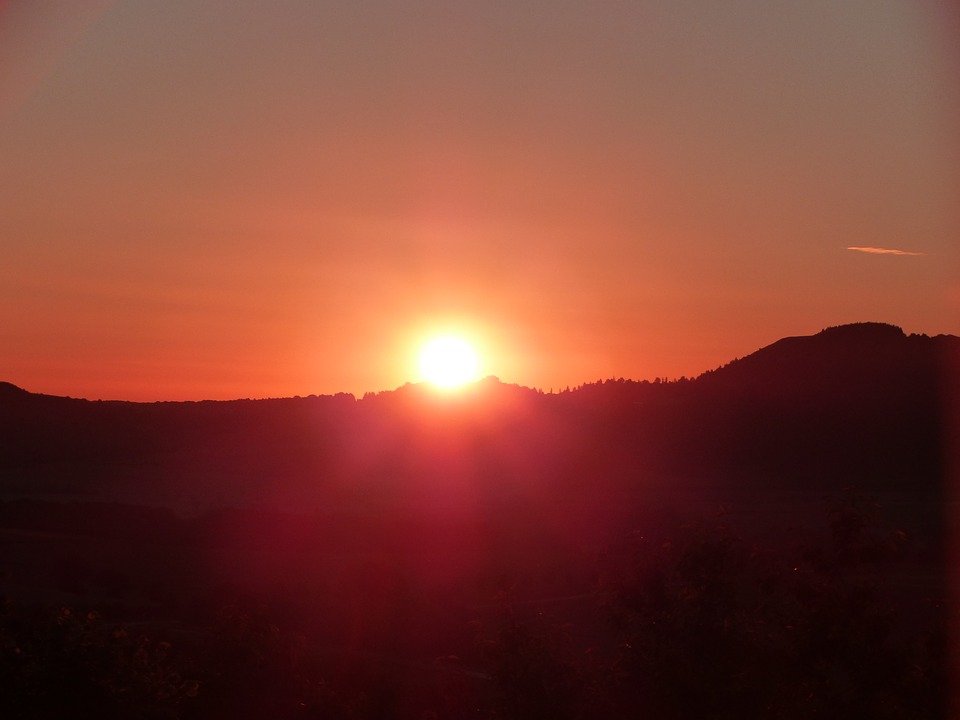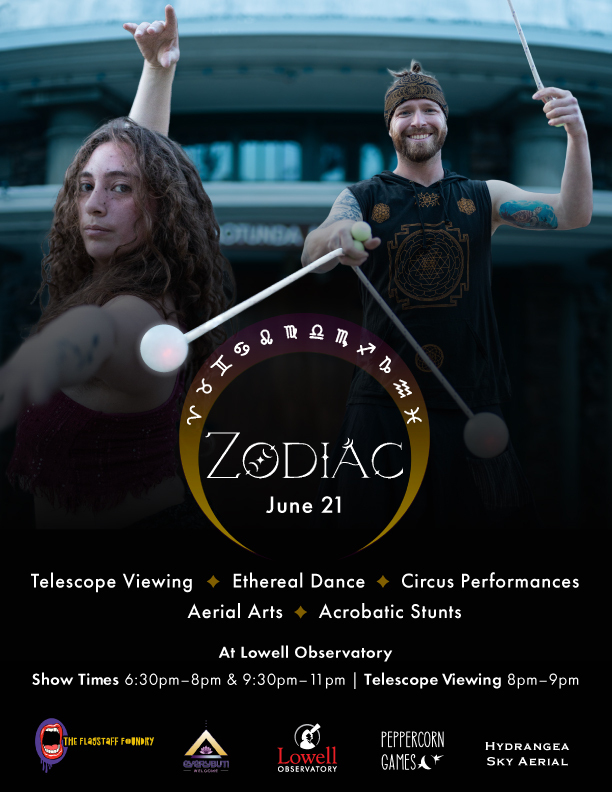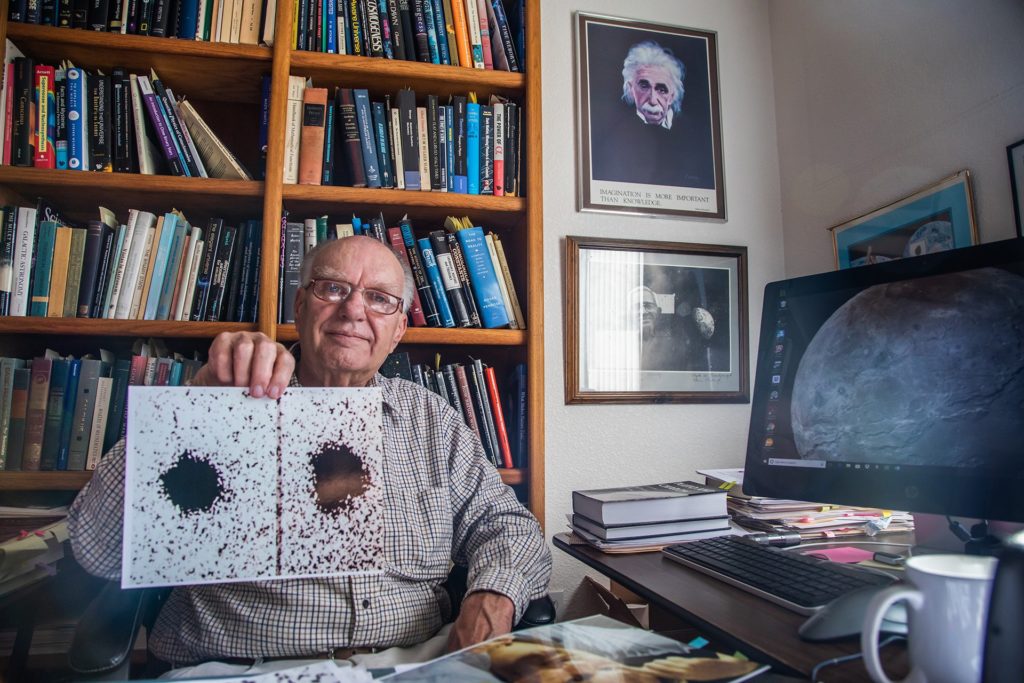
Welcome back to the Mars Hill Quick Report, a bite-sized weekly news update from Lowell Observatory! Each week, we’ll give you the short version of upcoming events at Lowell and beyond, plus a little dash of history.
News
☆ June 21
2022 Summer Solstice
On the Summer Solstice, the Sun will rise and set as far north as it can as seen from the Northern Hemisphere, and it will rise and set as far south as it can as seen from the Southern Hemisphere. In the Northern Hemisphere, the Sun will take the longest possible path across the sky, resulting in the longest day of the year. At noon on this day, the Sun will also reach its highest possible point in the sky!

Yvonne Höpfl – Dornberg, Germany
☆ June 21
2022 Zodiac Solstice Event
Revel with us at the 2022 Zodiac Solstice Event!
In Pagan times, the Solstice was believed to be when the veil between this world and the next was at its thinnest, and when fairies were at their most powerful.
Lowell Observatory is partnering with Peppercorn Games to bring you a truly unique celebration of the Summer Solstice: Zodiac, an ethereal night of dance, acrobatic, stunt, and circus performances set under the dark skies of Mars Hill. Each of the evening’s performances will represent a different sign of the Zodiac, adapted from the myths and legends of various cultures. Audience participation is highly encouraged!
Tickets for Zodiac are available for purchase at the time of the event and in advance online.

☆ June 23
International Women in Engineering Day
International Women in Engineering Day is a campaign that raises international awareness of women in engineering. Most importantly, the day focuses attention on the amazing career opportunities available to women and girls in this exciting industry. Check out Inwed.org to learn more about this inspiring international campaign and how you can help it gain traction!

This Week in History
☆ June 22, 1978
James “Jim” Christy Discovers Charon, Moon of Pluto
Pluto’s largest moon Charon was discovered in 1978 by astronomers James Christy and Robert Harrington at the U.S. Naval Observatory in Flagstaff, Arizona, located just a few miles away from Lowell Observatory—the discovery place of Pluto itself.
Christy discovered Charon when he noticed that Pluto would sometimes appear strangely elongated in some images as he examined them on highly magnified photographic plates. As he tracked Pluto’s movement, he noticed that the mass causing its elongated appearance would move around it, sometimes disappearing completely. A look back at older photographs of Pluto showed the same strange elongated shape, confirming that Christy had indeed discovered that Pluto had at least one moon.
Christy dubbed it Charon, after the ferryman of Roman myth who carried souls across the river Acheron to Pluto’s underworld, and because of its resemblance to his wife’s Charlene’s nickname, “Char.”

Christy holds two of the telescope images he used to spot Charon in June 1978. | NASA/Johns Hopkins University APL/SwRI/Art Howard/GHSPi

Christy and his wife, Charlene. | NASA/Johns Hopkins University APL/SwRI/Art Howard/GHSPi


